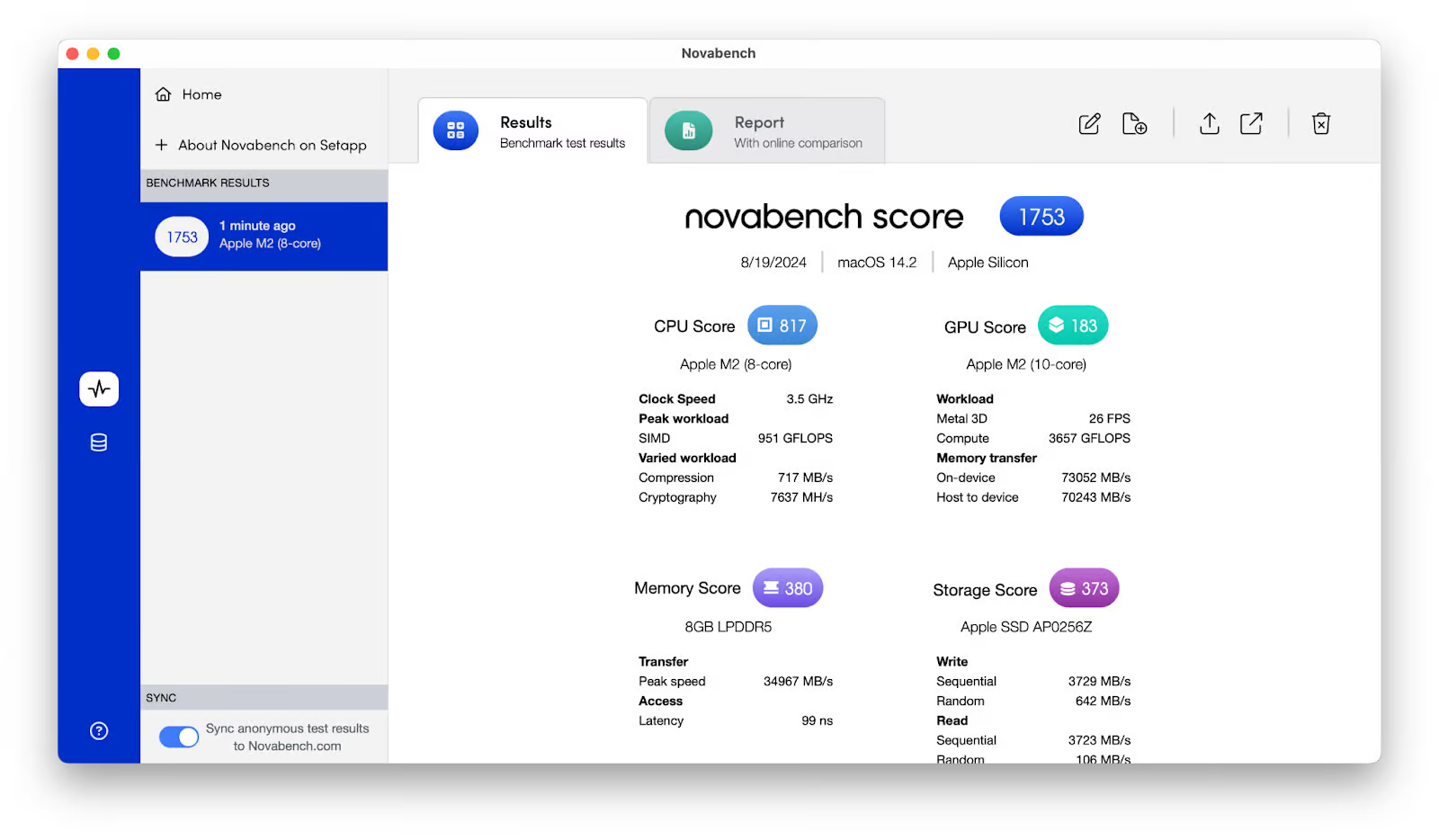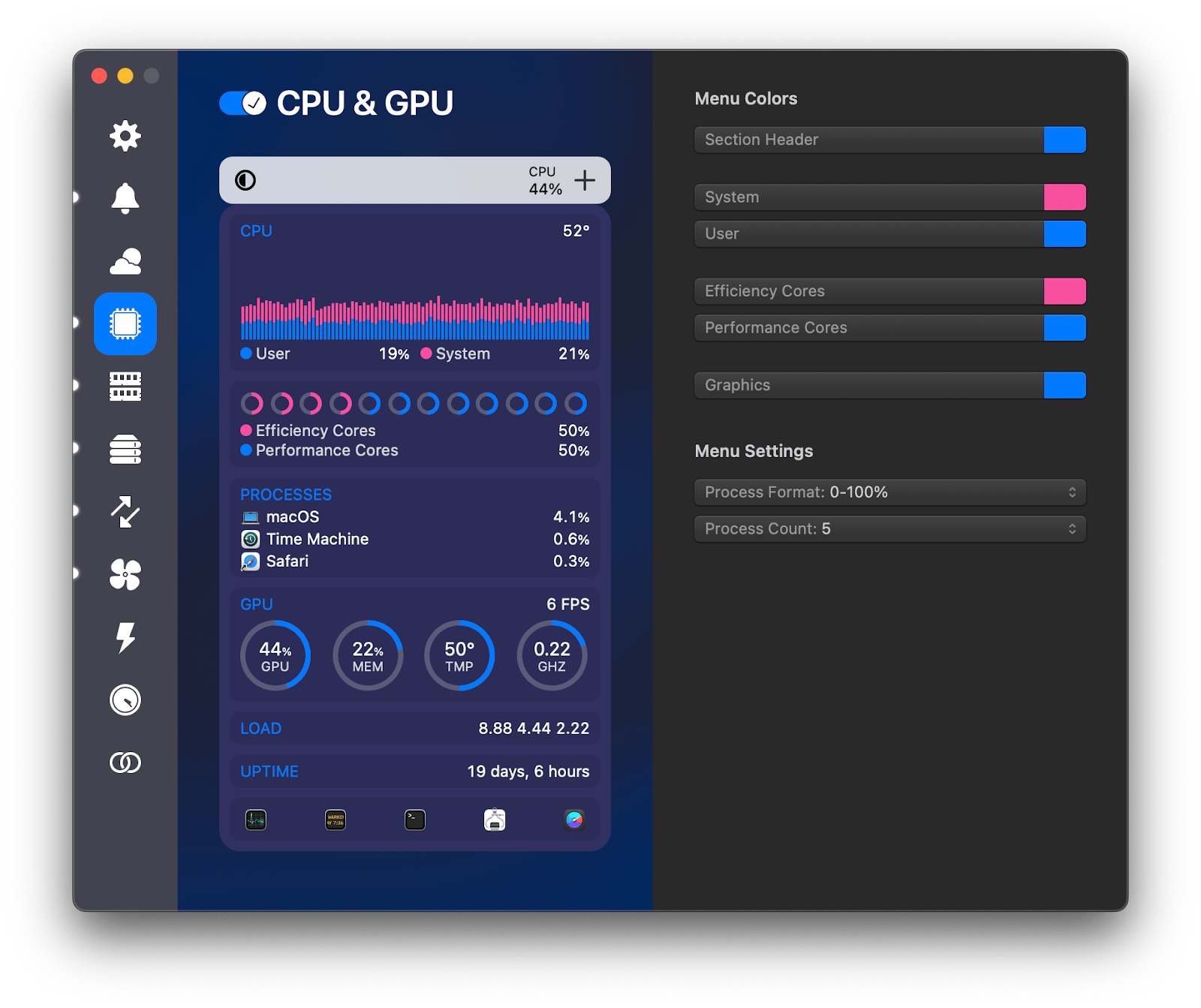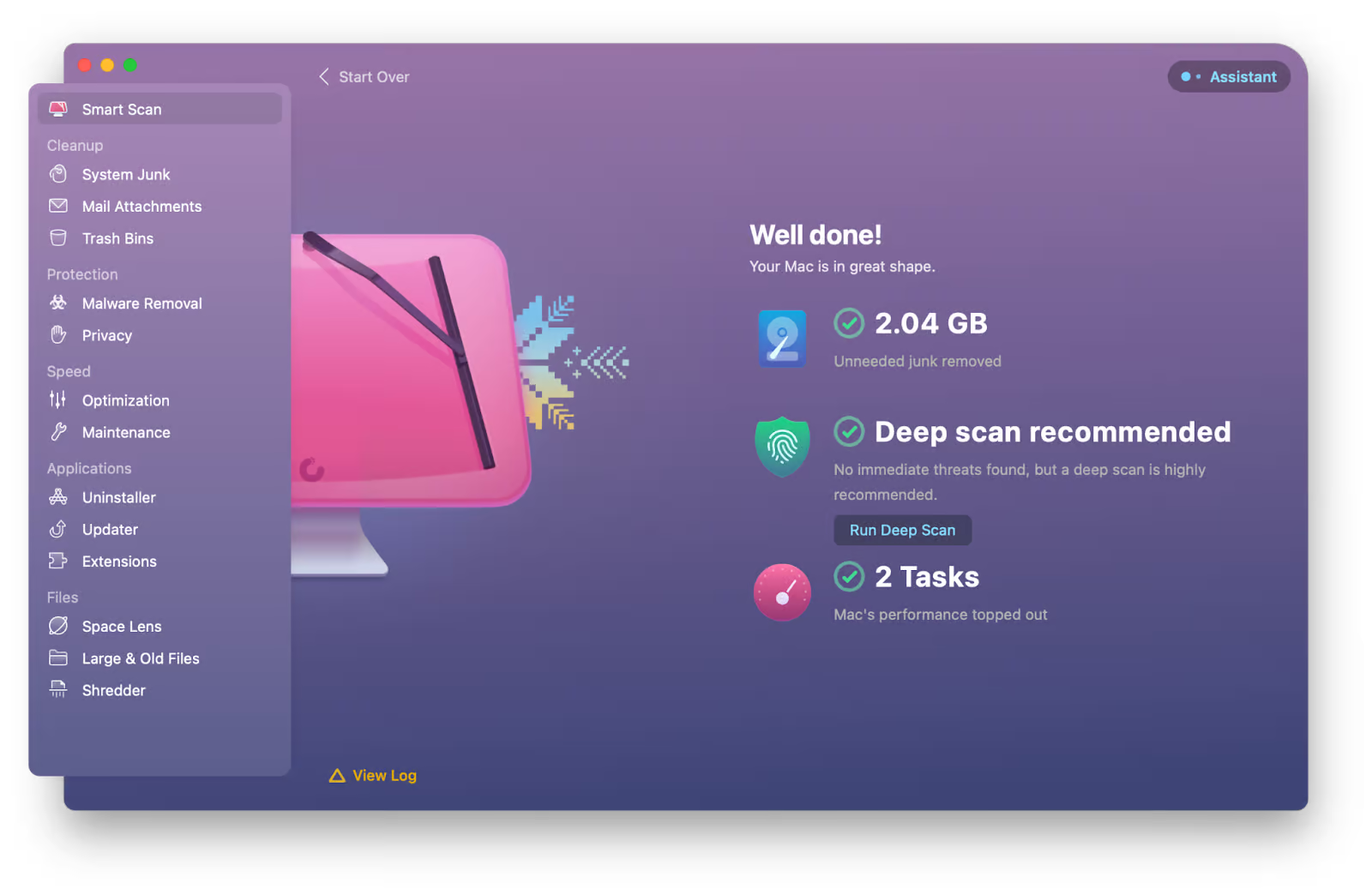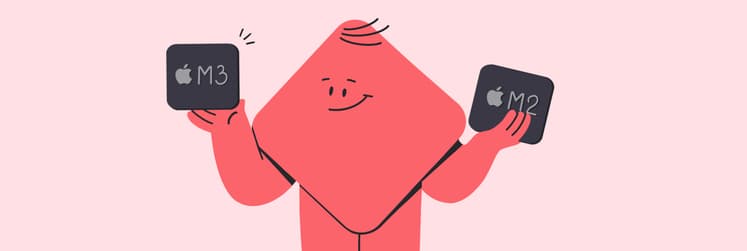What are the differences between M1 and M2 chips?
When Apple's silicon processors are released, the tech world will know that Mac performance is about to take on a whole new meaning.
The M1 and M2 chips were the very first generations released in the market and were groundbreaking in improving battery life, performance, and efficiency—but what sets the two apart? Is the M1 chip better than the M2?
Join me for an in-depth analysis of the M1 and M2 chips, where I'll examine performance, power efficiency, and other features.
Overview of M1 and M2 chips
Apple makes bold and calculated moves. When the company decided to develop custom-designed silicon, the M1 chip was created. This demonstrated to the public that Apple devices could achieve more than ever. The company abandoned the traditional approach of having separate CPU (Central Processing Unit) and GPU (Graphics Processing Unit) components and integrated them into a single chip through its microprocessor.
M1 chip review
Launch date: November 2020
Devices: Mac Mini, the 13-inch MacBook Pro, MacBook Air
Key features: 8-core CPU, seven or 8-core GPU (depending on the device configuration), UMA (Unified Memory Architecture)
The M1 chip represented a significant breakthrough for Apple's Mac, delivering a substantial boost in performance and energy efficiency. Additionally, UMA enables the CPU and GPU to share the same memory pool, enhancing efficiency and performance.
M2 chip review
Launch date: June 2022
Devices: MacBook Air (2022), the 13-inch MacBook Pro (2022)
Key features: 8-core CPU, 10-core GPU, improved UMA
The M2 chip is Apple's next-generation processor, building on the success of the M1. It is available in the latest MacBook Air and MacBook Pro models.
It would be easy for me to boast of the power of the M1 and M2 chips based on personal experience, but if you really want to measure your Mac's performance, you'll need the right tool to do so.
I've frequently used Novabench to benchmark my Mac's overall system performance. It tells me all I need to know about how my CPU and GPU are performing and how I can improve my setup based on their capabilities.

It's a user-friendly app that performs essential tests, like memory or stress tests for CPU, GPU, and RAM, at the click of a button to ensure stability. You can also schedule it to run tests regularly and compare the results against similar devices.
Read also: All MacBooks in order
M1 vs M2 performance comparison
To kick off my comparison, I’ll focus on general performance and the improvements made from the M1 to the M2.
CPU performance
With two years to make upgrades from the M1, Apple certainly didn't disappoint. Although the M2 has an 8-core CPU, just like the M1, the performance cores are faster and better equipped to handle high-performance tasks, and the efficiency cores are much better. Apple claims the M2 chip is 18% faster in CPU speed thanks to its new Avalanche and Blizzard cores. The M2 also has an upgraded 16MB Level 2 cache size, unlike the M1's 12MB. Since this cache handles calculations, the larger size enables quicker access to results.
Although the CPU doesn't degrade as quickly as the battery, it still experiences wear and tear over time. You can't prevent this, so it's best to monitor your CPU usage and identify which processes are using the most resources. That's where App Tamer came in so handy for me.

Just by clicking on the menu bar icon, you can see the percentage of CPU used by all apps and identify the ones using the highest CPU. With this information, you can adjust settings to stop or slow down the app if it's using more than a certain percentage of CPU or when it's idle. Unlike the built-in Activity Monitor, I don't have to worry about stopping essential processes that I don't fully understand, as it allows me to exclude essential system processes from the list.
GPU performance
If you compare the GPU to the CPU, you’ll spot many more numerical improvements right away. Right off the bat, you’ll see two extra GPU cores (10 vs. 8) with the M2, increasing GPU frequency from 0.39 GHz to 0.45 GHz and the maximum GPU memory to 24 GB from 8GB. In their press release, Apple states that the M2 has a 35% faster GPU and a 25% higher graphics performance than the M1 at the same power level. There’s also a much higher memory bandwidth that contributes to its raw performance.
If you’re curious about how your GPU is doing, iStat Menus can go further than provide insight into your CPU and display a real-time look at GPU performance, such as temperature and usage. Especially since I’m always overloading my laptop by opening a million tabs and windows, having all the suitable icons in the menu bar is a simple way to make sure things are running as they should.

I consider it one of the most comprehensive Mac monitors I’ve ever used, as there’s data for just about every metric you’ll need to know about. To use it, you can go through the tabs on the platform, customize each panel to your liking, and toggle them on or off for the menu bar.
Memory and storage
The M series chips use what’s called a SoC (System on a Chip) design, which integrates all the separate essential components of a computer onto a single compact chip. The new M2 is built with 20 billion transistors, which total 25% more than the M1. These extra transistors allow the memory controller to deliver 50% more unified bandwidth than the M1 at 100GB per second. It’s also more equipped to handle multitasking, with support for up to 24GB of RAM—an 8GB upgrade from the M1.
If you’re notorious for eating up your Mac’s memory with files, folders, and programs, these upgrades are bound to tickle your fancy. And that also means cleaning up your computer is a task and a half, especially since it’s tricky to know where to look, what to get rid of, and how. I ditched the manual method a long time ago and now use CleanMyMac X to clean up and optimize my Mac.

Upon opening the app, hit the Scan button, and it’ll look for unnecessary junk, malware, and ways to increase your system performance. If you’re happy with its assessment, just click Run, and the app will clean your system for you—no effort is needed on your end. In my most recent cleanup, I removed 2.04GB of junk and topped my Mac performance for that extra boost.
Power efficiency and battery life of M1 vs M2
Both the M1 and M2 set the bar high regarding battery and power efficiency—arguably two of the most important things we care about when we buy a device. If they can’t stay powered up for long, all those features and upgrades won’t mean much. Let’s take a deeper look.
Power consumption
The most notable difference between the M1 and M2 chip is that the M2 consumes less power at higher performance levels. Even at the same power levels, I touched upon how GPU performance improves by 35% at peak power and CPU performance bumps up to 18%—that’s a glaring example of how much power consumption has improved.
Battery life
The good news is that the new MacBooks with the M2 chip are way more efficient than the M1 models. This means they have better battery life and can last much longer on a single charge—your battery's in safe hands with M2. It's all thanks to the improvements in the chip's design and how it manages power. So, if you get one of these M2 MacBooks, you can expect a significant boost in battery life.
Macworld tested the M1 chip vs. M2 chip battery life by comparing the MacBook Air M1 with the MacBook Air M2, both with 256GB storage. They found that the M2 version could get to a 50% charge in just half an hour, and video playback on a 15-inch MacBook Air (the one I have!) with a display of 150 nits (screen brightness) lasted 19.05 hours. The M1 MacBook Air, in comparison, lasted just 16.2 hours.
I've had a couple of MacBooks in my day, and every time I've had to replace them, it's been due to battery issues. With my current model, I've made a pact to take better care of my battery with the help of Endurance, a dedicated battery monitoring app.

The app helps your MacBook run up to 20% longer through low-power mode. You might be thinking, “Isn’t there already a built-in Low Power Mode though?” There is, but it’s not a very detailed or explicit function. Endurance lets you visually see and select features like Dim Screen, Pause Services, and Slow Down Processes. It can even start low power mode automatically when your Mac has a certain percentage of power remaining. Set all these functions to your liking in your settings, and let the app do the work.
Additional features and technologies M1 vs M2
Beyond its essential base capabilities, the M2 has enhancements in other areas.
Neural Engine and Machine Learning
Within the M series chips, there’s something called the Neural Engine—an AI hardware piece that helps with ML (Machine Learning). In the Macs, it helps run all the calculations required for modern features like voice recognition, augmented reality, and searching for objects in Photos. Although the M1 and M2 chips feature the Neural Engine, the M2 can handle 40% more operations per second than the M1 at 15.8 trillion. That big boost in efficiency and speed in ML and AI means apps that rely on these technologies can perform better.
Media Engine
In such a visually-driven society, there’s no question why Apple planned to improve video encoding and decoding. While the M1 can effectively encode and decode 4K streams, the M2 steps things up to include 8K streams as well. It can also accelerate ProRes and ProRes RAW formats for professional video editing.
Connectivity and I/O
One of the biggest complaints from me and other MacBook users with the M1 was that there wasn’t a dedicated charging port like there typically was. With only two Thunderbolt 3 (USB-C) ports, you’d be in trouble if you needed to charge your computer and utilize the ports for multiple connections. Also, the M2 added a dedicated charging port for a MagSafe charger.
Device compatibility and pricing
Another Apple M1 and M2 difference is, of course, their pricing. While it can feel tempting to go ahead and purchase an M2 device, it’s a good idea to consider whether the upgrades are worth the cost difference. The following devices include the base M1 or M2 chips (excludes upgraded models).
Devices with M1 chip
The M1 chip is featured in entry-level models, such as the MacBook Air (M1, 2020), 13-inch MacBook Pro (M1, 2020), Mac mini (M1, 2020), and iMac (24-inch, M1, 2021). It is also used in the iPad Pro (2021) and iPad Air (2022) models.
Devices with M2 Chip
The M2 chip is included in newer models such as the MacBook Air (M2, 2022) and the 13-inch MacBook Pro (M2, 2022).
Final thoughts: Deciding between the M1 chip vs the M2
The M1 compared to the M2, is still a powerful SoC chip—it’s got a rainbow of benefits compared to the older Intel Macs. The M2 has a leg over the M1, with significant CPU and GPU upgrades, power efficiency, and neural engine improvements.
Whatever chip you choose, third-party apps can help optimize your system and device experience. For instance, App Tamer can track and reduce your CPU usage, iStat Menus can provide detailed real-time insights on your CPU and GPU performance, Endurance can maintain your battery life, and CleanMyMac X can declutter your Mac from junk files.
All these apps can be found in the Setapp platform, which offers access to 240+ native iOS and macOS apps for almost any purpose. A 7-day free trial allows you to test all of these apps. Why wait to try?
FAQ
Is M2 still good in 2024?
Even though we’ve got the new M3 and M4 chips to enjoy, the M2 chip is still one of the best computer processors today. If you compare the M2 against the M1, you’ll see significant performance upgrades that can stand up to traditional Intel processors, like good battery life and performance.
Will M2 be better for gaming?
M2 chips are so high-performing that they’re better equipped to handle demanding video games. With a more powerful 8-core CPU and a 10-core GPU, gamers can enjoy better graphics and handling. To track your CPU and GPU performance while playing games, try iStat Menus.
How do you know if your laptop is M1 or M2?
Click the Apple icon > Choose About This Mac. Next to Chip, the processor will be Apple M1 or Apple M2.
What is the basic difference between M1 and M2?
The M2 chip offers upgrades over the M1. It features a more powerful 10-core GPU and an improved 16-core Neural Engine for better graphics and AI performance. It also supports up to 24GB of unified memory and higher bandwidth for demanding tasks.
How much faster is M2 than M1?
Regarding CPU and GPU performance, Apple claims that the M2 has 18% faster CPU performance and 35% faster GPU performance than the M1, tested at the same power level.






